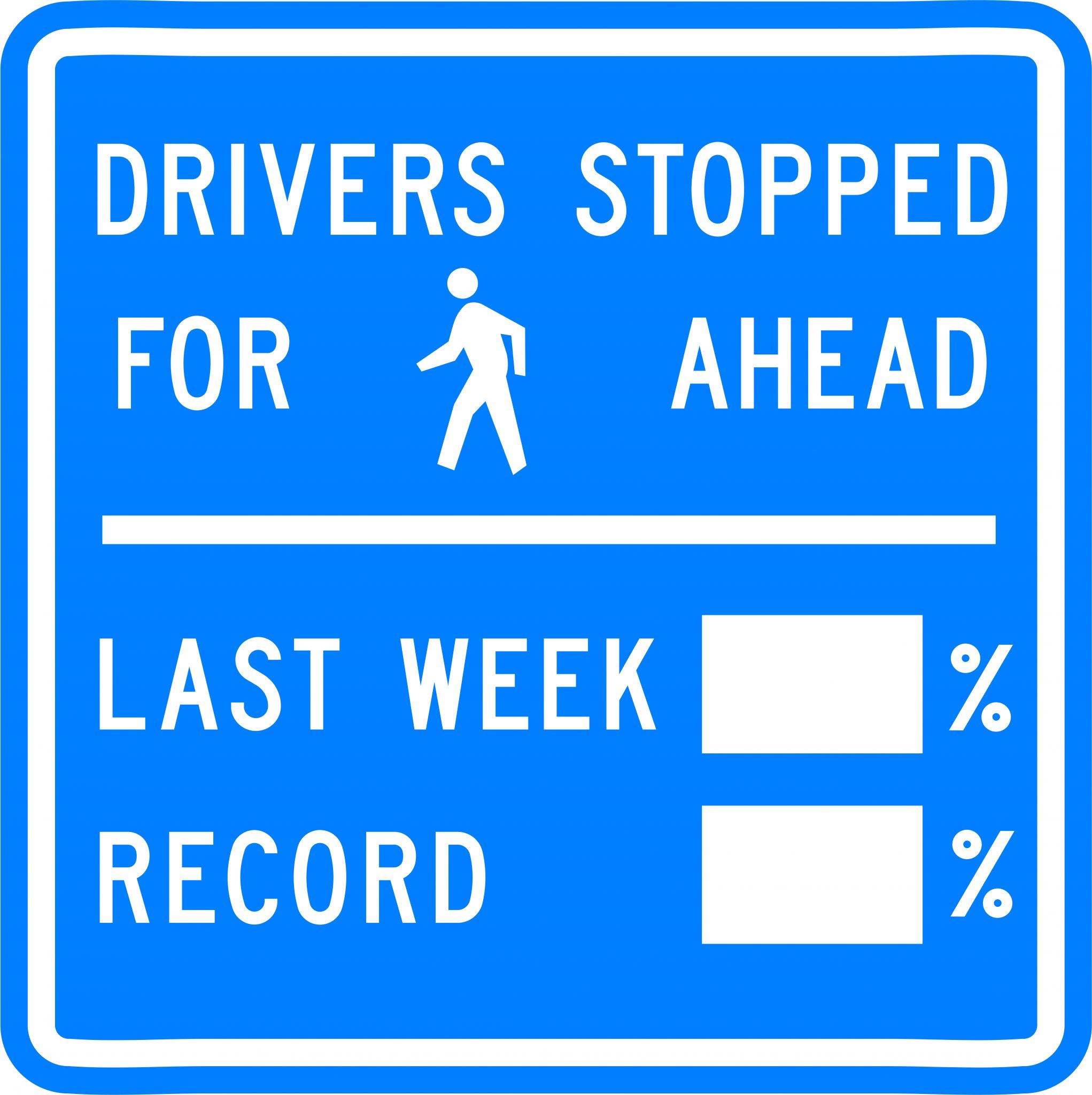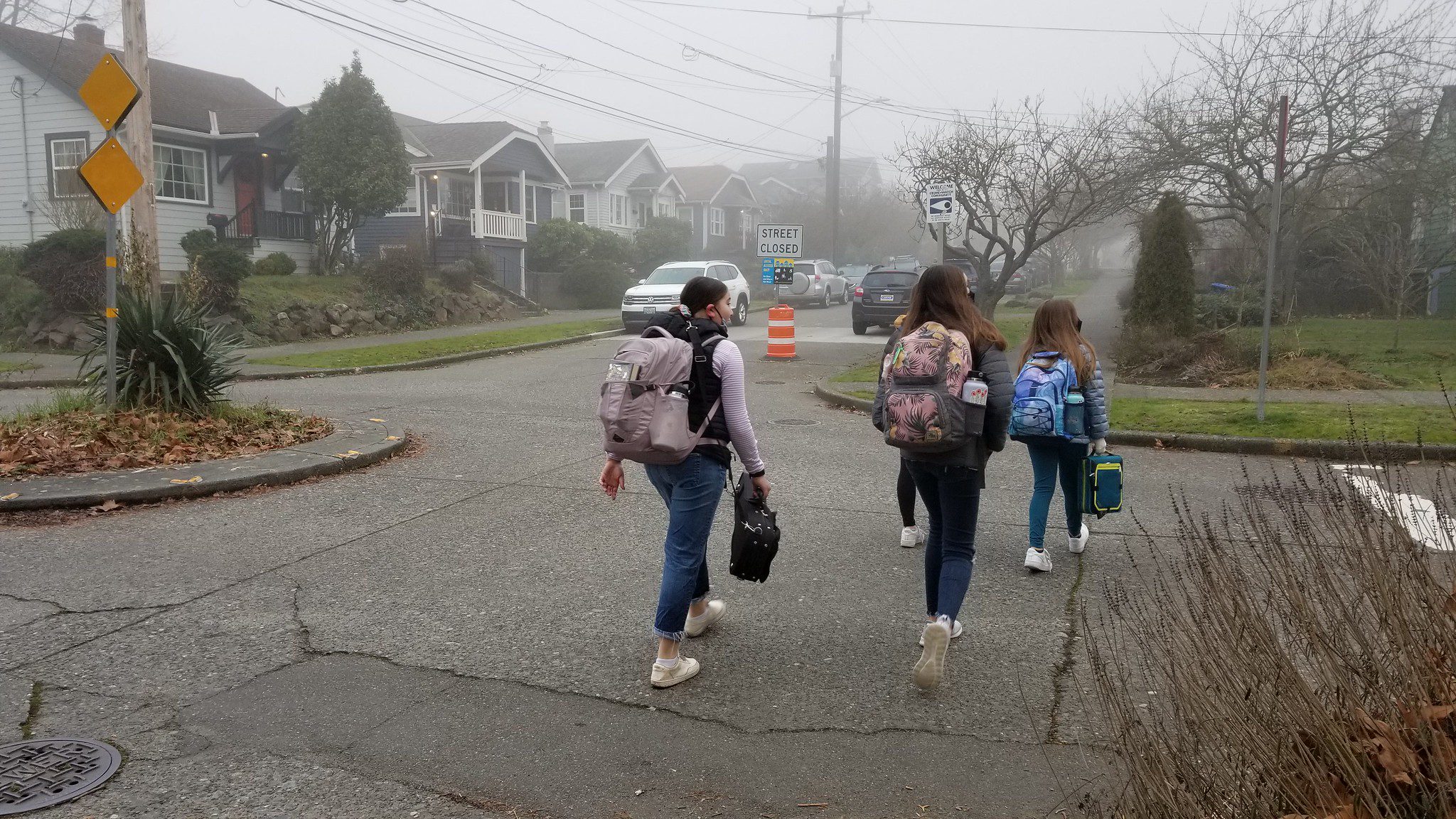 Several students cross the street in a Seattle neighborhood while walking to school. Photo: SDOT
Several students cross the street in a Seattle neighborhood while walking to school. Photo: SDOT SUMMARY:
- State law specifies that drivers must stop for pedestrians at practically all intersections, whether or not there is a painted crosswalk.
- A recent informal survey showed that 70% of drivers claimed to stop for pedestrians at painted crosswalks, but when we observed crosswalks in real life fewer than 20% of drivers actually stopped.
- We are working to develop a $350,000 public education and awareness campaign over the next two years to make sure more drivers understand and follow these traffic safety laws.
- As a first step, we are unveiling “driver report card” signs at certain intersections to encourage drivers to stop for people crossing the street. This tactic is based on a similar campaign which led to more drivers following the law in St Paul, MN.
- Thank you for your interest and helping the effort to keep everyone safe when they wish to walk or roll in their communities, and need to safely cross the street.
This week, we began unveiling “driver report cards” signs at certain crosswalks to show the percentage of drivers who stop for people waiting to walk or roll across the street. This is the start of a larger $350,000 public education campaign focused the benefits of following the speed limit and making sure drivers understand that all intersections are crosswalks – and that state law requires them to stop for pedestrians and people in wheelchairs or other mobility assistive devices, who are attempting to cross the street.
Per Washington State law, practically all intersections are legal pedestrian crossings, whether or not there is a painted crosswalk, unless a sign officially says that people are not allowed to cross the street in a certain location. That means drivers are legally required to stop for people crossing the street at nearly every intersection in Seattle and throughout the state.
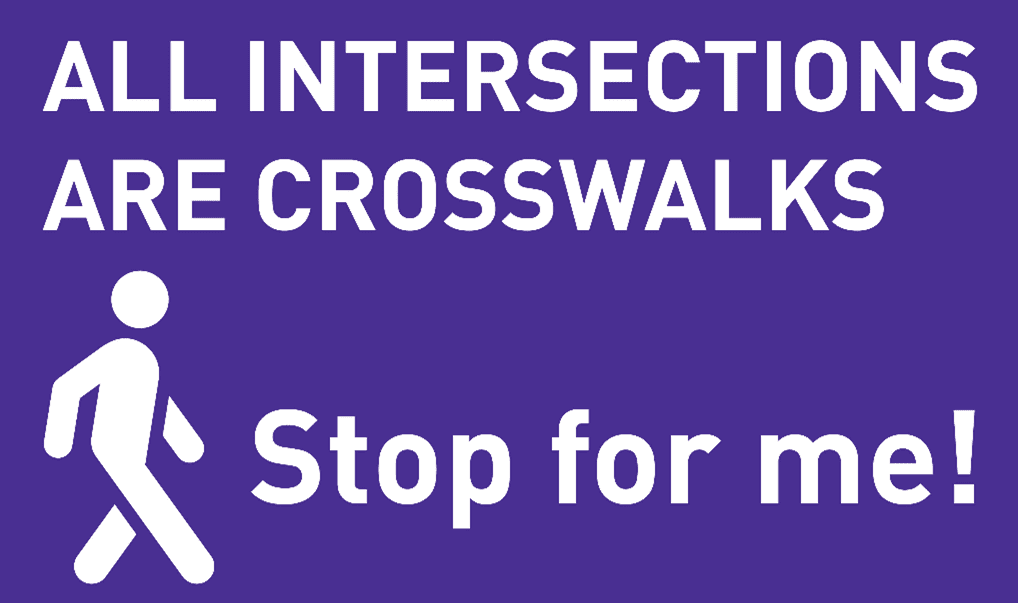
Most people say they follow the law, but few drivers actually do.
In a recent informal survey of over 1,000 people in Seattle, over 70% of people said that they always stop for people at marked crosswalks. However, when we observed these crosswalks in real life, we saw that in many locations less than 20% of drivers actually stopped for pedestrians trying to cross the street.
The data is even more concerning when it comes to legal crossings (again – that’s practically every intersection) which don’t have a painted crosswalk. Less than 40% of respondents claimed to stop for people at unmarked crosswalks, and only 10% of drivers or less actually did in our recent real-life observations.
Clearly, we have significant work to do to make sure everyone knows and obeys the law.
Most drivers talk the talk, but few let pedestrians walk the walk.
Over 70% of drivers claimed to stop at painted crosswalks... but we recently observed fewer than 20% of drivers actually stopping in real life.
We can all do better, and we’re working to improve awareness — with the ultimate goal of making it safer for people walking and rolling to cross the street.
Over the next couple of years, we will develop a $350,000 public education campaign to make sure drivers understand and obey the law. The bulk of this effort will be paid for with a $250,000 grant which we recently received from the Washington Traffic Safety Commission, in addition to funding from the SDOT Vision Zero and Pedestrian Master Plan programs.
Our goal is to increase safe driving behavior, which includes following the posted speed limit and stopping for pedestrians at all intersections.
The driver education campaign will focus on two main key messages:
- 25 mile per hour speed limits save lives
- Every intersection is a legal crossing
We’re starting off by unveiling a few new road signs as part of an effort to gather real-world data before the full public education campaign launches into full swing.
Our work to install these “driver report card” signs at intersections throughout Seattle to count the percentage of drivers who stop for pedestrians is based on a traffic safety strategic tactic pioneered in St Paul, Minnesota.
The signs are intended to make drivers think about how their behavior compares with other drivers and encourage them to change their behavior to do better. We hope that this tiny bit of peer pressure will nudge drivers to rethink their habits and make pedestrian safety a higher priority.
If you’re feeling skeptical, please keep in mind that this same tactic in St Paul led to the portion of drivers obeying the law doubling in just a matter of weeks (it increased from 30% to 62% of people driving who stopped for pedestrians at some intersections).
While it’s hard to say whether people were motivated by doing the right thing or by being better than their neighbors, the bottom line is that the peer pressure worked to make their actions safer.
Driving safely, obeying the laws, and keeping pedestrian safe is the responsibility of everyone who gets behind the wheel of a car. We appreciate drivers who are doing their part of this important collective effort to keep everyone safe so all people can go home to their families at the end of every day.
We plan to install the driver report card signs at 13 intersections around Seattle (at both marked, and unmarked, crosswalks). Today (March 18), we unveiled the first two driver report card signs at intersections in the High Point neighborhood of West Seattle:
- 34th Ave SW and SW Morgan St (painted crosswalk)
- Sylvan Way SW and SW Sylvan Heights Dr (unpainted crossing)
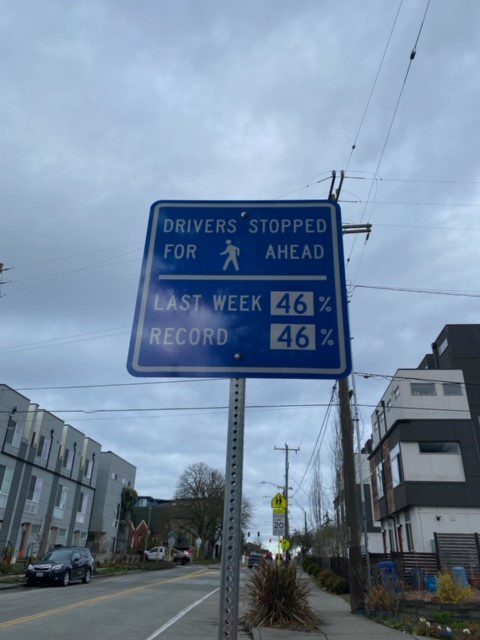
During recent real-life observations of these intersections, we saw that 46% of drivers stopped at the painted crosswalk and 0% of drivers stopped at the unpainted crossing. This is based on watching the behavior of 25 cars while a volunteer high school student stands at the intersection trying to cross the street.
Over time, we’ll move the signs to Rainier Beach and then other neighborhoods around the city. All of the initial locations will be within the attendance area of schools with high proportions of students receiving free or reduced-price lunch, and with high proportions students of color. This is based on our objective of centering safety investments in communities who have been most harmed through public disinvestment.
We’ll collect data once a week to calculate the percentage of drivers obeying the law and update the signs. We’ll do this for about six weeks in each location, and then take down the signs while we assess how well the experiment went and use the data to help design our larger public education campaign.
We’re intentionally doing this work now prior to the start of our broader public education campaign, so we can better understand how effective these signs are by themselves. This will also be a starting data point that we can use for our analysis, evaluations, and further comparisons later.
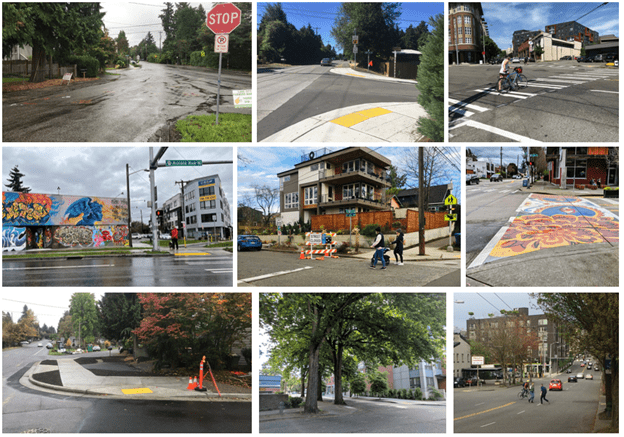
The percentage of people driving who stop for someone waiting to cross is predictable based on the pedestrian’s race.
Research shows that, as compared to white pedestrians, pedestrians of color wait significantly longer and are passed by more people driving while waiting to cross at crosswalks [please note: you can find additional information in this scholarly article: Racial Bias in Driver Yielding Behavior at Crosswalks (Tara Goddard, 2014, published in the National Institute for Transportation and Communities, with funding from the U.S. Department of Transportation; courtesy of the Portland State University Library)].
In this data, we continue to see the role that individual bias and systemic racism play in the disparate impacts experienced among Black, Indigenous, and People of Color (BIPOC) communities with regard to traffic crashes. We understand and value our key role as a City and as a municipal transportation department in addressing and working to undo this harm, together.
To this end, we will also compare the percentage of people driving who stop for white pedestrians to the percentages of those who stop for pedestrians who are BIPOC. We are working with community partners, including the Delridge Neighborhood Development Association and CHAMPS Resource Center, to identify particularly unsafe intersections and collect this data.
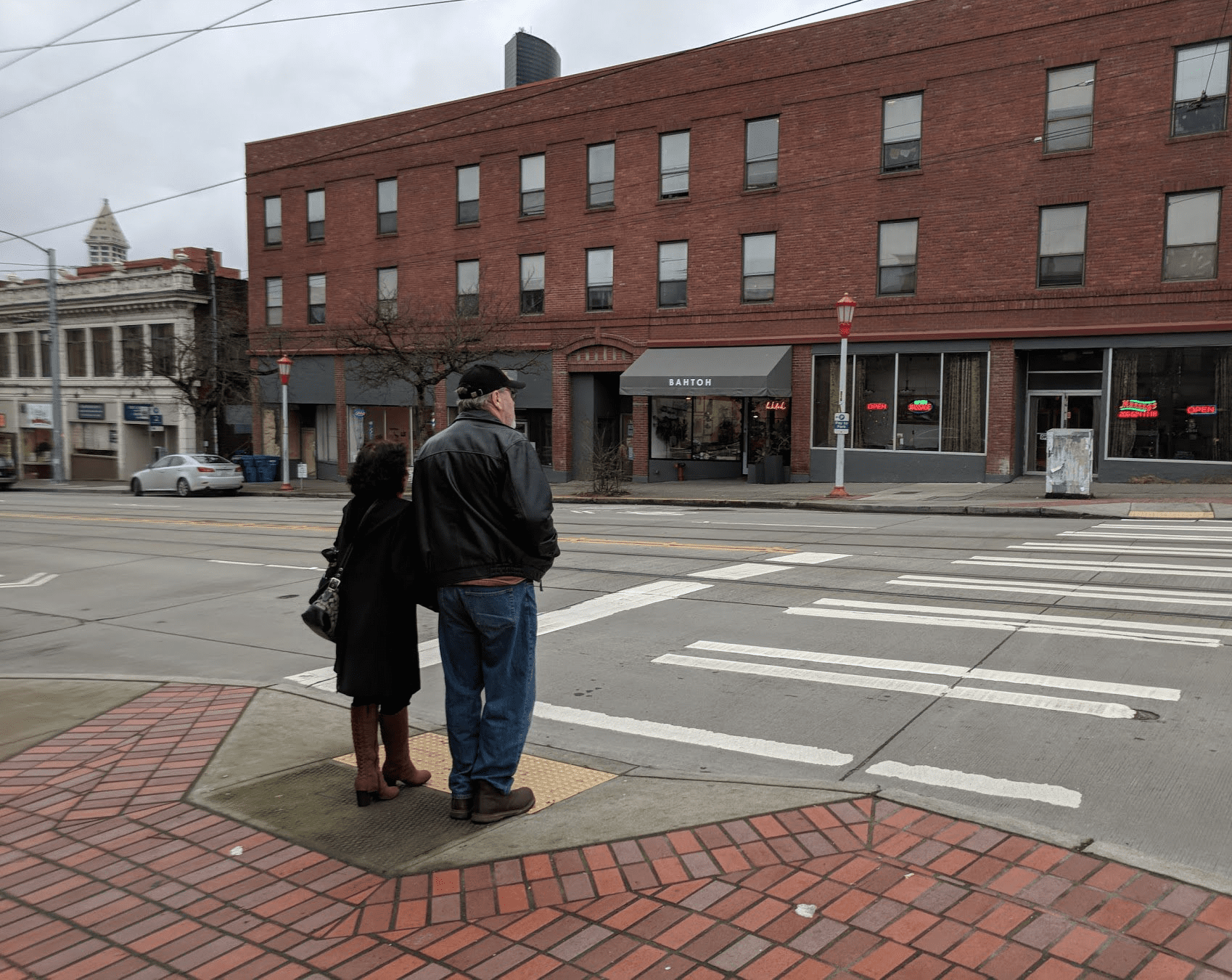
This is just one of many strategies we are using to prevent serious injuries and traffic deaths on Seattle streets.
We have also been lowering speed limits on Seattle’s major streets to 25 mph or less, added pedestrian-first walk signals to more than 400 traffic signals, implemented improvements along crash-prone, high-injury streets like Rainier Ave S (including the recently-added hardened centerlines to slow speeds and increase safety at crosswalks).
This effort will also provide information about driver behavior at intersections to inform policies, practices, and future SDOT investments. We’ll keep examining our approach and adjusting it to ensure we’re increasing racial equity and moving in the direction of our Vision Zero plan to end traffic deaths and serious injuries on city streets by 2030.
We hope you’ll join us in this important work.
Please reach out to Kadie Bell Sata at Kadie.Bell@seattle.gov if your organization would like to partner to educate drivers by identifying crossing locations and coordinate local data collection efforts. Partners will receive compensation.
Thank you again for your interest and attention to this work as we aim to better understand, and ultimately improve pedestrian safety in our city, and help keep people walking and rolling safe whenever they need cross the street.
